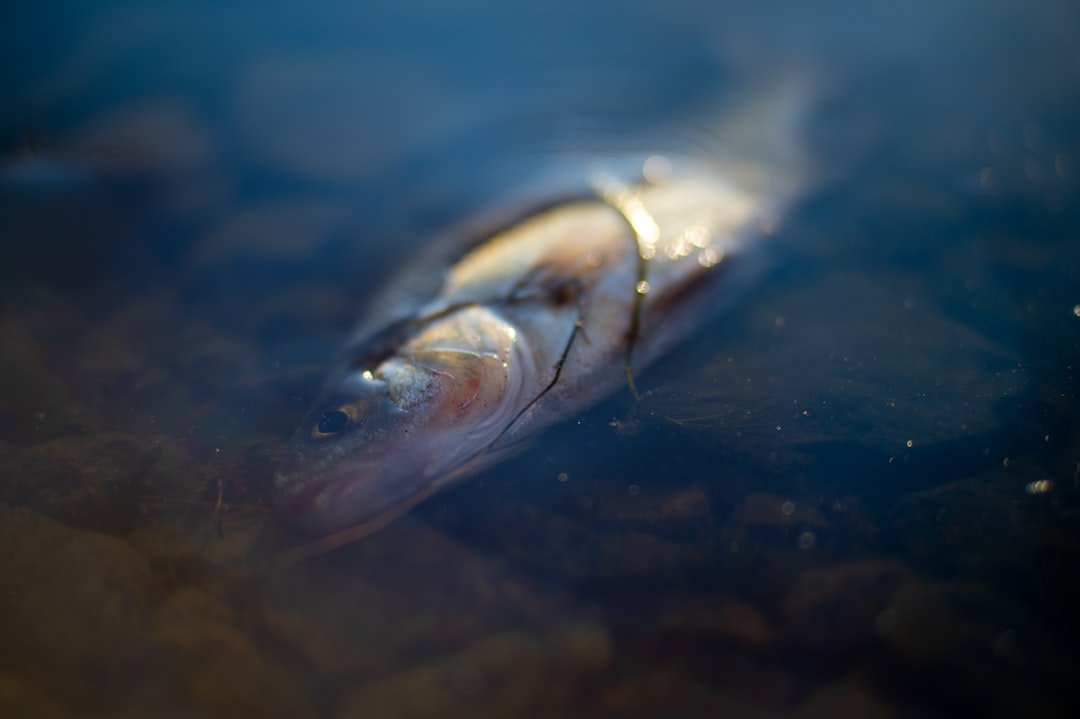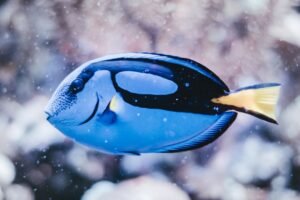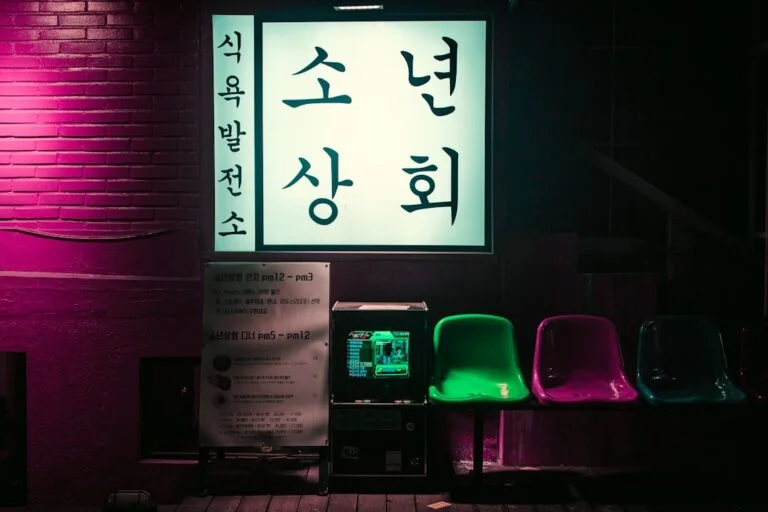A fish eye lens is a unique and versatile tool that is used in photography to capture wide-angle images with a distorted perspective. It is an essential piece of equipment for photographers who want to push the boundaries of their creativity and capture images that are not possible with other types of lenses. In this article, we will explore what a fish eye lens is, how it works, its advantages and disadvantages, and how to choose the right one for your needs. We will also discuss various techniques for capturing unique and creative images with a fish eye lens, as well as tips for shooting landscapes, architecture, and portraits. Additionally, we will explore post-processing techniques for enhancing fish eye lens images, and discuss the future of fish eye lens technology.
Key Takeaways
- A fish eye lens is a wide-angle lens that creates a distorted, spherical image.
- Advantages of using a fish eye lens include capturing unique perspectives and fitting more into the frame, while disadvantages include distortion and difficulty in focusing.
- When choosing a fish eye lens, consider the focal length, aperture, and compatibility with your camera.
- Techniques for capturing creative images with a fish eye lens include getting close to your subject, playing with angles, and experimenting with lighting.
- When shooting landscapes and architecture with a fish eye lens, be mindful of distortion and use it to your advantage.
- Dos and don’ts for using a fish eye lens in portrait photography include avoiding close-ups and being aware of distortion on facial features.
- Post-processing techniques for enhancing fish eye lens images include correcting distortion and adjusting saturation and contrast.
- Fish eye lens photography offers new perspectives and angles, allowing for creative and unique images.
- Creative projects to try with a fish eye lens include capturing reflections, shooting from unusual angles, and experimenting with light painting.
- The future of fish eye lens technology may include advancements in autofocus and image stabilization, as well as improvements in image quality and distortion correction.
What is a Fish Eye Lens and How Does it Work?
A fish eye lens is a wide-angle lens that captures an extremely wide field of view, typically around 180 degrees or more. It gets its name from the way it distorts the image, making straight lines appear curved, like the surface of a fishbowl. This distortion creates a unique and exaggerated perspective that can add drama and interest to photographs.
The way a fish eye lens works is by using a special type of optical design called a “curvilinear” design. This design allows the lens to capture light from a wider angle than a regular lens, resulting in the wide field of view that is characteristic of fish eye images. The curved shape of the lens elements also contributes to the distortion effect.
Compared to other types of lenses, such as wide-angle lenses or telephoto lenses, fish eye lenses offer an even wider angle of view. Wide-angle lenses typically have a field of view between 60 and 120 degrees, while telephoto lenses have a narrower field of view. Fish eye lenses go beyond these limits, capturing an incredibly wide perspective that can include more of the scene in the frame.
Advantages and Disadvantages of Using a Fish Eye Lens
Using a fish eye lens in photography comes with its own set of advantages and disadvantages. Let’s take a closer look at each:
Advantages:
1. Wider Angle of View: The most obvious advantage of using a fish eye lens is the incredibly wide angle of view it provides. This allows you to capture more of the scene in a single frame, making it ideal for landscape photography, architecture, and other situations where you want to include as much of the surroundings as possible.
2. Unique Perspective: The distortion effect created by a fish eye lens gives your images a unique and creative look. It can add a sense of depth and dimension to your photos, making them more visually interesting and engaging.
3. Creative Possibilities: The exaggerated perspective of a fish eye lens opens up a world of creative possibilities. You can use it to create surreal and abstract images, or to emphasize certain elements in the frame. It allows you to see the world in a different way and encourages you to think outside the box when composing your shots.
Disadvantages:
1. Distortion: While the distortion effect can be an advantage in some cases, it can also be a disadvantage. Straight lines in the image will appear curved, which may not always be desirable, especially in architectural photography where straight lines are important. However, this distortion can also be used creatively to add interest to your images.
2. Limited Use in Certain Situations: The extreme wide-angle perspective of a fish eye lens may not be suitable for all types of photography. It is not recommended for portraits, as it can distort facial features and make people appear unflattering. It is also not ideal for capturing distant subjects, as they may appear small and insignificant in the frame.
How to Choose the Right Fish Eye Lens for Your Needs
| Factors to Consider | Importance | Options |
|---|---|---|
| Focal Length | High | 8mm, 10mm, 15mm, 16mm, 17mm, 20mm |
| Aperture | High | f/2.8, f/3.5, f/4, f/5.6 |
| Image Quality | High | Prime lenses, high-end zoom lenses |
| Compatibility | High | Full-frame, APS-C, Micro Four Thirds |
| Price | Medium | 200-1000+ |
| Brand | Low | Canon, Nikon, Sony, Sigma, Tamron, Rokinon |
When choosing a fish eye lens, there are several factors to consider:
1. Focal Length: Fish eye lenses come in different focal lengths, ranging from 8mm to 16mm or more. The focal length determines the angle of view and the amount of distortion in the image. A shorter focal length will result in a wider angle of view and more distortion, while a longer focal length will have a narrower angle of view and less distortion.
2. Aperture: The aperture of a lens determines how much light it can gather and how shallow or deep the depth of field will be. Consider the maximum aperture of the fish eye lens you are considering, especially if you plan to shoot in low light conditions or want to achieve a shallow depth of field.
3. Compatibility: Make sure the fish eye lens you choose is compatible with your camera system. Check if it is available in the mount that matches your camera brand.
Types of fish eye lenses available in the market include circular fish eye lenses and full-frame fish eye lenses. Circular fish eye lenses capture a circular image within the frame, while full-frame fish eye lenses capture a rectangular image that fills the entire frame.
Techniques for Capturing Unique and Creative Images with a Fish Eye Lens
Using a fish eye lens opens up a world of creative possibilities. Here are some tips for using it creatively:
1. Get Close: To exaggerate the distortion effect, get close to your subject. This will make it appear larger and more distorted in the frame.
2. Use Leading Lines: The distortion effect of a fish eye lens can be used to emphasize leading lines in your composition. Look for lines that lead the viewer’s eye into the frame and use them to create dynamic and engaging images.
3. Experiment with Angles: Don’t be afraid to experiment with different angles and perspectives when using a fish eye lens. Get down low or shoot from above to create unique and interesting compositions.
Examples of unique and creative images captured with a fish eye lens include landscapes with a distorted horizon, architecture with exaggerated lines and curves, and abstract close-up shots that emphasize texture and detail.
Tips for Shooting Landscapes and Architecture with a Fish Eye Lens

When shooting landscapes and architecture with a fish eye lens, there are some techniques you can use to make the most of the wide-angle perspective and distortion effect:
1. Include Foreground Interest: To create depth and interest in your landscape shots, include a prominent foreground element in the frame. This could be a rock, a tree, or any other object that adds visual interest to the scene.
2. Look for Leading Lines: Leading lines can be particularly effective in landscape and architecture photography. Use them to guide the viewer’s eye through the frame and create a sense of depth and dimension.
3. Experiment with Composition: With a fish eye lens, you have the freedom to experiment with composition and create unique and unconventional images. Play around with different angles, perspectives, and framing to find the most interesting and visually appealing composition.
Examples of stunning landscape and architecture images captured with a fish eye lens include sweeping vistas with a distorted horizon, buildings with exaggerated lines and curves, and abstract close-ups that highlight architectural details.
Using a Fish Eye Lens for Portrait Photography: Dos and Don’ts
While fish eye lenses are not typically recommended for portrait photography due to the distortion effect, they can still be used creatively in certain situations. Here are some tips for using a fish eye lens for portraits:
1. Use it Sparingly: If you want to use a fish eye lens for portraits, it is best to use it sparingly and for specific creative purposes. It can be used to add a unique and unconventional look to your portraits, but it should not be the go-to lens for traditional portrait photography.
2. Shoot from a Distance: To minimize the distortion effect on facial features, shoot from a distance and zoom in. This will help to reduce the exaggerated perspective and make your subjects appear more natural.
3. Experiment with Composition: With a fish eye lens, you have the opportunity to experiment with composition and create unique and unconventional portraits. Play around with different angles, perspectives, and framing to find the most interesting and visually appealing composition.
Common mistakes to avoid when using a fish eye lens for portraits include getting too close to your subject, which can distort their features, and using it as the main lens for traditional portrait photography.
Post-Processing Techniques for Enhancing Fish Eye Lens Images
After capturing images with a fish eye lens, you can enhance them further through post-processing techniques. Here are some editing techniques you can use:
1. Correct Distortion: While the distortion effect is a characteristic of fish eye lens images, you may want to correct it in certain cases. Most photo editing software allows you to correct lens distortion by applying a specific correction profile for your lens.
2. Adjust Contrast and Saturation: Enhance the colors and contrast in your fish eye lens images to make them more vibrant and visually appealing. Adjust the levels, curves, and saturation to achieve the desired look.
3. Crop and Straighten: If there are any distracting elements or unwanted distortion in your image, you can crop and straighten it to improve the composition.
Examples of before and after images show how post-processing techniques can enhance fish eye lens images by correcting distortion, adjusting contrast and saturation, and cropping and straightening.
Fish Eye Lens Photography: Exploring New Perspectives and Angles
One of the key advantages of using a fish eye lens is the ability to explore new perspectives and angles in photography. By capturing an extremely wide field of view with a distorted perspective, you can create images that are visually striking and unique.
Using a fish eye lens encourages you to think outside the box and experiment with different compositions and angles. It allows you to see the world in a different way and capture images that are not possible with other types of lenses.
Examples of unique and creative images captured with a fish eye lens include abstract close-ups that emphasize texture and detail, landscapes with a distorted horizon, and architecture with exaggerated lines and curves.
Creative Projects to Try with a Fish Eye Lens
If you’re looking for some creative projects to try with a fish eye lens, here are a few ideas:
1. Miniature Worlds: Use a fish eye lens to create the illusion of miniature worlds. Find a scene with interesting elements and shoot from a low angle to make everything appear smaller and more compact.
2. Abstract Close-Ups: Get up close to your subject and capture abstract close-up shots that emphasize texture, detail, and patterns. Look for interesting textures, such as tree bark or water ripples, and experiment with different angles and perspectives.
3. Reflections: Use a fish eye lens to capture reflections in water or other reflective surfaces. The distortion effect can create interesting and surreal reflections that add depth and interest to your images.
Examples of creative projects using a fish eye lens include creating miniature worlds by shooting from a low angle, capturing abstract close-ups that emphasize texture and detail, and exploring reflections in water or other reflective surfaces.
The Future of Fish Eye Lens Technology: What to Expect in the Coming Years
As technology continues to advance, we can expect to see advancements in fish eye lens technology as well. Some possible developments include:
1. Improved Optics: Advancements in lens design and manufacturing techniques may lead to improved optics in fish eye lenses, resulting in sharper images with less distortion.
2. Autofocus: Currently, most fish eye lenses are manual focus only. However, we may see the development of fish eye lenses with autofocus capabilities in the future, making them more versatile and user-friendly.
3. Compact and Lightweight Designs: As technology progresses, we may see the development of fish eye lenses that are more compact and lightweight, making them easier to carry and use in various shooting situations.
Predictions for the future of fish eye lens technology include improved optics, autofocus capabilities, and compact and lightweight designs.
In conclusion, a fish eye lens is a versatile and creative tool that can add a unique perspective to your photography. It offers a wider angle of view, a unique distortion effect, and endless creative possibilities. While it may not be suitable for all types of photography, it can be used creatively in landscapes, architecture, and certain portrait situations. By choosing the right fish eye lens for your needs, using it creatively, and enhancing your images through post-processing techniques, you can capture stunning and visually striking images that push the boundaries of your creativity. So go out there, explore new perspectives and angles, and let your creativity soar with a fish eye lens.
If you’re interested in exploring the world of photography and expanding your creative horizons, you may want to consider the fascinating fish eye lens. This unique lens offers a wide-angle view and a distinctive curved perspective that can add a captivating twist to your images. To learn more about the fish eye lens and its applications, check out this informative article on Just Tidings: The Unveiling Truth: Poonam Pandey Breaks Silence on Controversial Death Announcement. Discover how this lens can transform your photography and capture moments from a whole new angle.




















+ There are no comments
Add yours